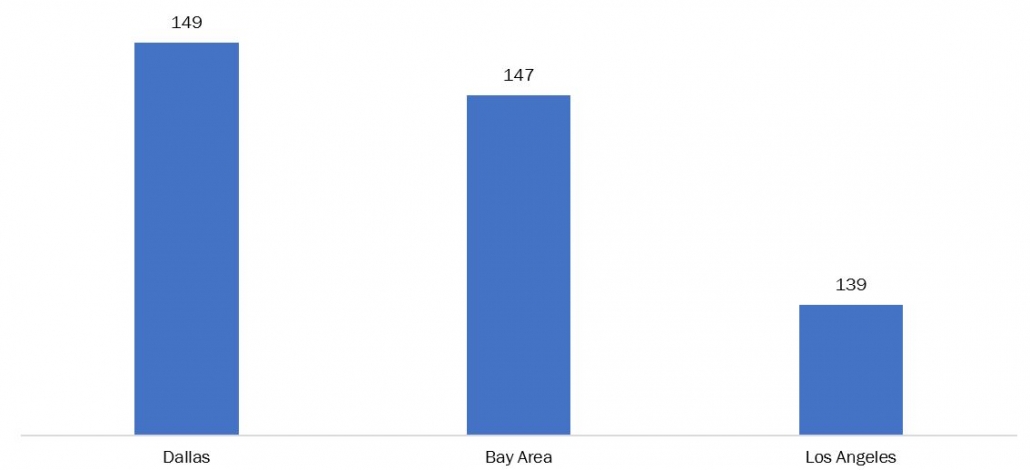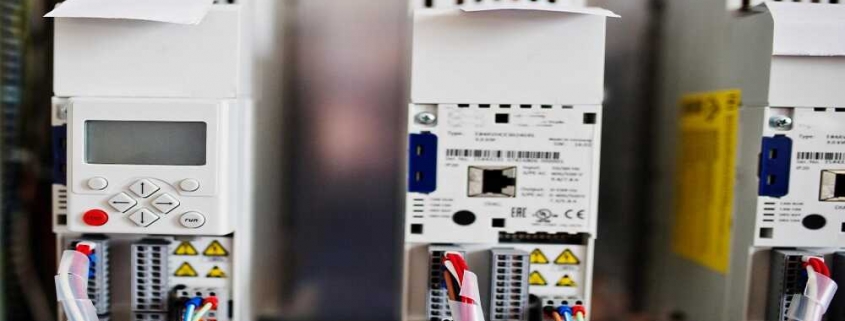Mastering Power Conversion: The Science Behind AC-DC Converters
The basic difference between AC and DC is that the alternating current that goes into the converter alternates the direction of the current periodically in the form of a sine wave whereas the direct current flows constantly in one direction. Therefore, a rectifier or an AC-DC converter is a device that can convert alternating current into direct current and is an important device that can be used in several consumer electronic devices like computers, smartphones, and household appliances where these electronic devices need to convert the current to DC power using the converter and then operate smoothly.
The converter rectifies the AC voltage to produce a pulsating DC output and then using filtering components like capacitors it provides a more stable DC output. There are different types of AC-DC converters available such as full-wave rectifiers that convert both halves of the AC input waveform into DC, half-wave rectifiers that convert both halves of the AC input waveform into DC, Bridge rectifiers, and Switch-mode power supplies or SMPS. These converters play a major role in powering a wide range of electronic devices, from small gadgets to large industrial machinery.
Global Production Trends
The production of AC-DC converters is growing with the rise in demand for consumer electronics and the increase in penetration of electronic devices in the day-to-day lives of consumers around the globe. These electronic devices are becoming more important daily in the consumer’s daily life therefore, with the increasing digitization of various sectors and the growth in demand for electronic devices the demand for AC-DC converters to power these devices is growing proportionally.
In recent years, there has been a notable increase in the promotion and awareness of energy efficiency and sustainable alternatives across the globe to reduce carbon footprint and switch over to energy-efficient alternatives. Hence, energy efficiency has become a major focus in the manufacturing and design of AC-DC converters to reduce energy consumption, meet regulatory standards, and minimize heat dissipation.
As AC-DC converters are contributing to making energy-efficient alternatives they are also being used in powering renewable energy sources like solar and wind power and this is raising the production rate of AC-DC converters as they are an essential part of the smooth operation of renewable energy resources. They are used in grid-tied inverters and power conditioning units which convert the variable DC output from renewable energy sources into usable AC power for the grid.
The rapid growth in technological advancements of the AC-DC converter is positively impacting and growing the global production trend for them. For instance, the integration of wide-bandgap semiconductors such as silicon carbide or gallium nitride helps to improve the performance and efficiency of AC-DC converters which leads to compact designs, higher switching frequencies, and reduced losses. Also, the growing focus on reliability and quality as manufacturers are investing in robust design methodologies and a shift towards smart and connected devices that focus on features such as remote monitoring, diagnostic capabilities, and compatibility with IoT platforms are contributing to increasing the AC-DC converter production trends across the globe.
AC-DC converter use case
The AC-DC converter has several use cases that are boosting their production and market around the globe. These use cases include consumer electronics like laptops, gaming consoles, TVs, and tablets for powering them, the growing use of smartphones in the daily life of consumers is increasing the need for AC-DC converters proportionally as they are found in chargers or adapters and power supplies which helps in converting AC mains power to the DC voltage required by the electronic device.
The AC-DC converter is used in industrial automation where it provides power to several electrical components such as sensors and motors and in the telecommunication industry where the infrastructure and the powering equipment such as base stations and telecom towers use AC-DC converters for converting the current according to the device needs.
Moreover, they play an important role in renewable energy systems such as solar energy and wind turbines which can convert the DC power that is generated by solar panels or wind turbines into AC power to operate the facility smoothly coupled with the growing adoption of EVs that needs an AC-DC converter in EV charging stations to convert AC power from there to DC power that is suitable for charging EV batteries.
The data centers present globally need AC-DC converters to provide efficient and stable power output to the servers and the converter powers various medical devices including diagnostic instruments and surgical tools which are necessary for saving a patient’s life, in the aerospace industry they provide regulated power supply to face the harsh operating environments.
The rapidly growing EV infrastructure for charging stations is anticipated to be a major factor contributing to the growth in the growing demand for AC-DC converters globally. For instance, the US government is making significant investments to improve the EV charging infrastructure.
Table 1: Investments for EV Charging by the US Department of Energy
| INVESTMENT AMOUNT | DETAILS |
| $10 Million | This investment is made for researching and developing innovative designs and technologies to reduce the cost of electric vehicle supply equipment as they will be needed in large quantities to support large volumes of EVs. |
| $20 Million | This investment is made to accelerate clean energy jobs or provide new electric transportation solutions to under-served communities and accelerate the adoption of commercially available plug-in electric vehicles. |
| $4 Million | This investment is made to increase workplace charging regionally or nationally and increase PEV ownership for consumers in underserved communities. |
Market Dynamics and Drivers
Several factors drive the AC-DC converter market, including a rise in the application of AC-DC converters in several consumer electronics like smartphones, laptops, and refrigerators in recent times coupled with the rise in demand for data centers with the growing amount of global data has contributed significantly to boosting the AC-DC converter market.
These data centers need efficient operation of several different IT infrastructures or enterprises and these converters provide efficient and stable power to servers, networking equipment, storage systems, and cooling infrastructure for the smooth operation of the data centers. Also, they play an important role in providing medical devices with a reliable power source and these devices are growing in demand and are anticipated to contribute to growing the AC-DC converter market in the forecast period.
Additionally, the increasing demand for energy-efficient solutions, expansion of renewable energy infrastructure, advancements in power electronics technology, growing adoption of electric vehicles, and increasing investment in infrastructure development powering critical infrastructure components and supporting economic growth using the converter are the factors that are predicted to propel the market growth as they have a significant use for AC-DC converter for proper functioning.
The AC-DC convert plays a crucial role in the proper functioning of data centers and with the growth in the development of data centers the demand for AC-DC converters will rise proportionally. For instance, the USA has the largest amount of data centers across the globe which is over 2,600. This includes data centers in Dallas with the highest number of data centers which is 149 followed by the Bay Area with 147 data centers as stated by USITC.
Figure 1: States With the Most Number of Data Centers in the USA

Source: usitc.gov
Challenges and Constraints
Despite the huge advantages and use cases of AC-DC converter the companies that manufacture them face a lot of challenges with significant improvements being made in AC-DC converter technologies and keep up with that improving technology and increasing complexity. Also, meeting stringent regulatory standards for energy efficiency, cost burdens in the electronics industry, component shortages, supply chain disruptions, and high-power densities and switching frequencies in AC-DC converters that result in significant heat generation are anticipated to hinder the AC-DC converter market growth over the forecast period.
Emerging Opportunities and Innovations
Although challenges might hamper the market, the AC-DC converter market presents numerous opportunities for innovation and growth. Advances in its applications across various industries like aerospace, electronics, automotive, and energy are the major reason for that. Also, the adoption of wide-bandgap materials such as silicon carbide and gallium nitride in power semiconductor devices, integration of digital control techniques, and integration of GaN-based power devices, gate drivers, and passive components into compact power modules that offer higher power density are some innovations that are predicted to positively affect AC-DC converter market.
Key Developments
- In March 2023, Advanced Energy Industries, Inc. added a 48 V module and expanded its Artesyn AIF family of full-brick AC-DC converters which further increases the efficiency of the operation process of the converter and has several applications like robotics and 3D printing.
- In June 2022, The ABB company or enterprise opened one of the largest DC fast charger production facilities in Italy which helped with the charging solution for the growing adoption and popularity of EVs among the general public of the region and strengthened the position of the ABB company as the world leader in EV charging solutions with the opening of the facility in the Italy country.
- In June 2021, ROHM company announced that they launched one of the industry’s first AC/DC converter ICs that comes with a built-in 1700V SiC MOSFET and it is specially designed to optimize industrial applications.
At last, concluding that the AC-DC converter market is predicted to have several innovations and growth opportunities over the forecast period. The market is driven by the increasing popularity of electric vehicles coupled with consumer electronics and applications across various industries like growing data centers and renewable energy. There are several challenges to be faced such as growing advancements in technologies and reducing power consumption of AC-DC converters to make them energy efficient. Therefore, the industry is anticipated to capitalize on technological advancements and innovations to meet the needs of a growing global demand for AC-DC converters.



